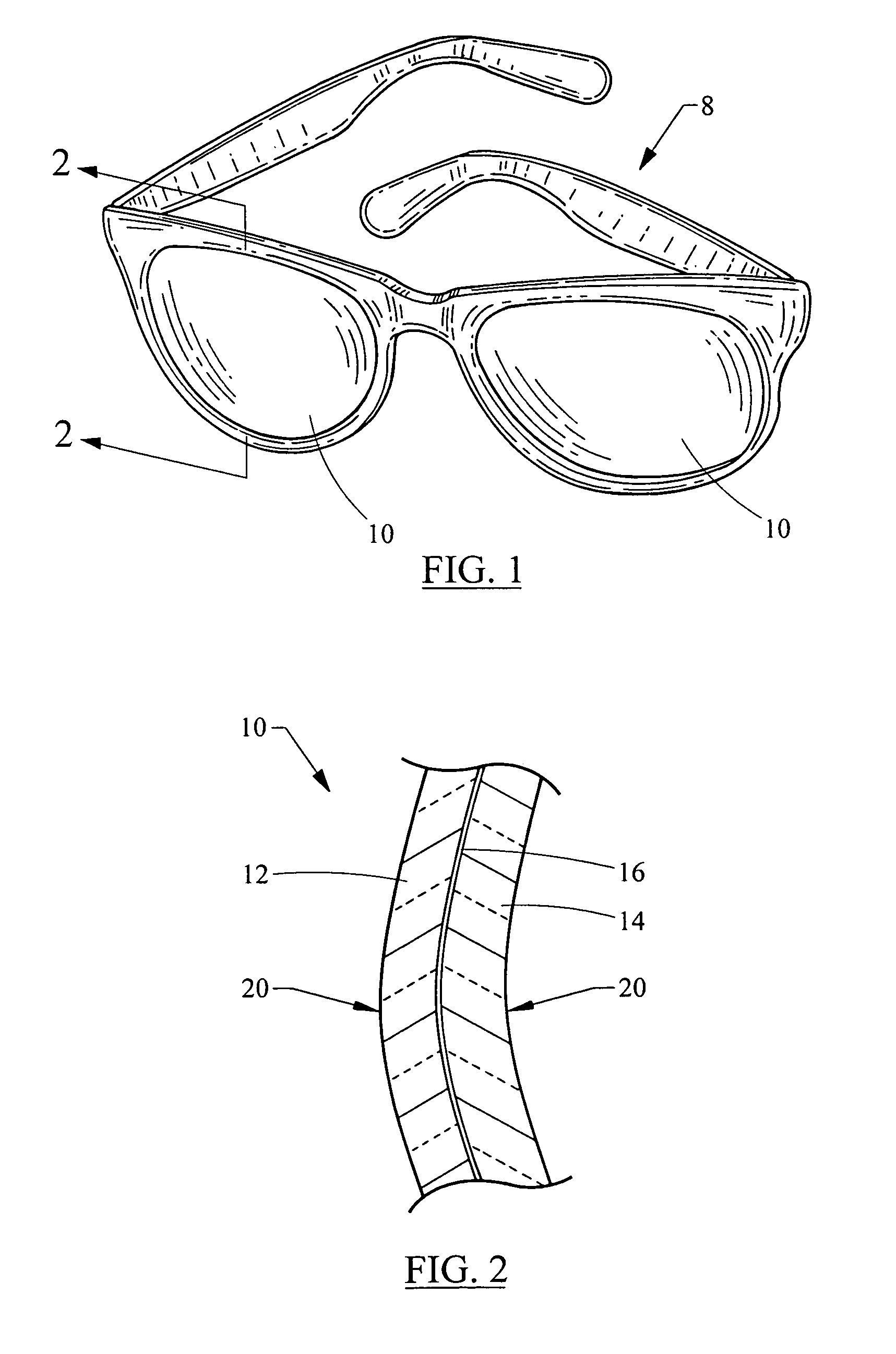Lens system and method with antireflective coating
a technology of anti-reflective coating and lens system, which is applied in the field of anti-reflective coating application, can solve the problems of destructive interference, prior art anti-reflective coating typically reduces reflection, and the cost associated with such coatings has been cost prohibitive for sunglasses or the like, so as to improve the perceived clarity of transmitted images, improve hardness and scratch resistance, and improve the effect of cost reduction
- Summary
- Abstract
- Description
- Claims
- Application Information
AI Technical Summary
Benefits of technology
Problems solved by technology
Method used
Image
Examples
Embodiment Construction
[0016]A pair of sunglasses (8) with lenses (10) prepared in accordance with the present invention are shown in FIG. 1. The lenses (10) preferably include an acrylic base, preferably polymethylmethacrylate. The lenses, of course, may be made of glass or any other suitable material known in the art for use in association with glasses or sunglasses (FIG. 1). As shown in FIG. 2, which is a diagrammatic cross-section along line 2-2 of FIG. 1, the lenses (10) comprise a first curved lens element (12) and a second curved lens element (14). The lens elements (12) and (14) are laminated on either side of a polarized film (16) by an adhesive or another suitable means.
[0017]Due to the sensitivity of the polarized film (16) to heat, the method of the present invention involving application of the antireflective coating most preferably is conducted at a temperature less than 200° C. After the lens elements (12) and (14) have been laminated to the polarized film (16), the lens (10) is provided wi...
PUM
 Login to View More
Login to View More Abstract
Description
Claims
Application Information
 Login to View More
Login to View More - R&D
- Intellectual Property
- Life Sciences
- Materials
- Tech Scout
- Unparalleled Data Quality
- Higher Quality Content
- 60% Fewer Hallucinations
Browse by: Latest US Patents, China's latest patents, Technical Efficacy Thesaurus, Application Domain, Technology Topic, Popular Technical Reports.
© 2025 PatSnap. All rights reserved.Legal|Privacy policy|Modern Slavery Act Transparency Statement|Sitemap|About US| Contact US: help@patsnap.com



